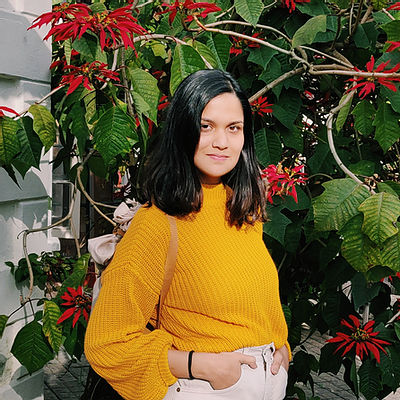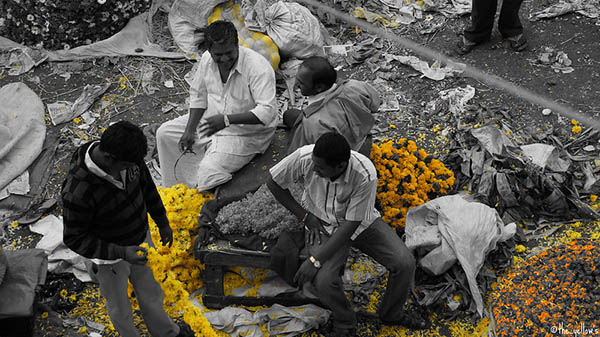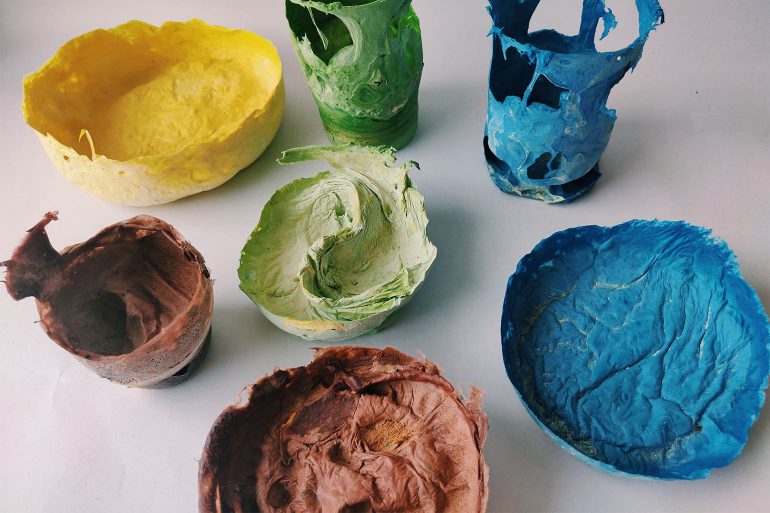“Today, industrial design has put murder on a mass-production basis. By designing criminally unsafe automobiles that kill or maim nearly one million people around the world each year, by creating whole new species of permanent garbage to clutter up the landscape, and by choosing materials and processes that pollute the air we breathe, designers have become a dangerous breed.” — from Design for the Real World: Human Ecology and Social Change (1971) by Victor Papanek
Material designer Sachi Tungare has been deeply inspired by Papanek’s ideas on responsible design. Dabbling in design research, material exploration and circular design herself, the young designer was troubled by the ecologically harmful production methods. Today, she has successfully created alternative materials from waste materials like cigarette butts and flowers.

Tungare experimented with cigarette butts in her project ‘let’s (not) kick butt’, and with flowers in another project, ‘finding gold in marigold’ to create new materials. “With my work, I aim to strike a balance with local, renewable resources and waste streams with traditional craft techniques and adapted low-tech methods,” she said.
Tungare’s material exploration begins with a playful investigation into the nature of the material, determining its qualities and properties through iterations of physical and chemical experiments.
In our country, 2 lakh tons of flower waste is generated every day from hotels, wedding ceremonies, gardens, places of worship, etc. One year, during Ganesh Chaturthi, Tungare noticed large amounts of discarded flowers. The Mumbai-based designer embarked on a project to find material potential in the bright colours, varied textures, and pleasant fragrances of the discarded flowers.

Tungare’s material exploration begins with a playful investigation into the nature of the material, determining its qualities and properties through iterations of physical and chemical experiments. Simultaneously, secondary research is conducted. “Failure in these experiments is a crucial part of the process, as it speaks volumes about the innate nature of the material,” she said. The experiments are essentially intended to achieve a texture or quality that can be translated into a product that can gain an advantage from it.
Aware of the massive contribution of the hotel industry towards plastic pollution, the material designer sought to replace the single-use plastic products with her invented material.
In ‘finding gold in marigold’, the experiments were designed to find a viable material in the flower. Certain characteristics were tested for opacity, binding strength, flexibility, and malleability among others. Tungare was met with a challenge during the experiments: the flowers began to rot within a few weeks. She concluded that the end-product would have an endurance of only a few weeks, integrating with the soil at the end of its lifetime. Aware of the massive contribution of the hotel industry towards plastic pollution, the material designer sought to replace the single-use plastic products with her invented material. The final set of products include miniature toiletry bottles, a marigold scrub, slippers, coasters, packaging for a sewing kit, soap packaging and bathroom slippers. The abundant, widely available and cheap raw material kept the production model sustainable.


As a material designer and passionate cook, Sachi’s upcoming project celebrates the most versatile raw material around the world: wheat flour. The project is an exploratory study on gluten—what gives bread its airy texture—as a material. Becoming more mindful of the rituals involved in preparing food, she observed how different methods of cooking change the matter- its composition, its chemical state, its longevity, and its texture.

Tungare’s work has found a greater purpose in a variety of industries. At the moment, she has a few collaborative projects where her materials are being used in larger-scale applications. She is also working on launching her own collection of products created with the materials she has developed.
***
Ankitha Gattupalli is an architect and active contributor to discourse on spatial practices. Her work aims to uncover and reshape the processes through which spaces, ecologies and communities are collectively created. This article is second in a series on material researchers and biomaterials. Read the first article here.

